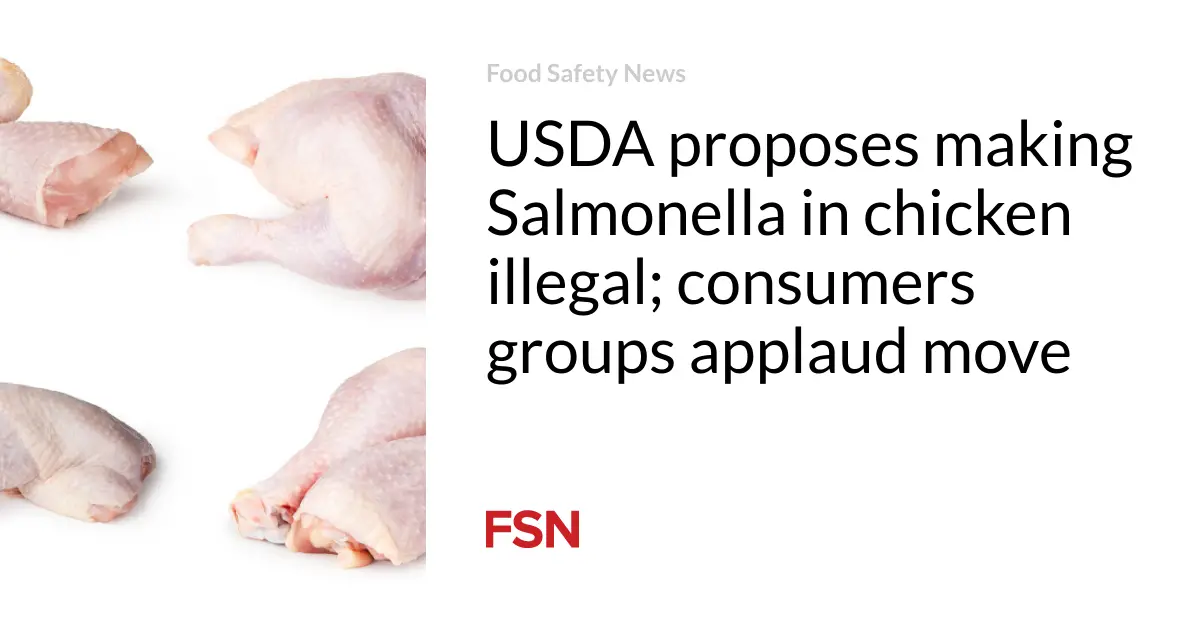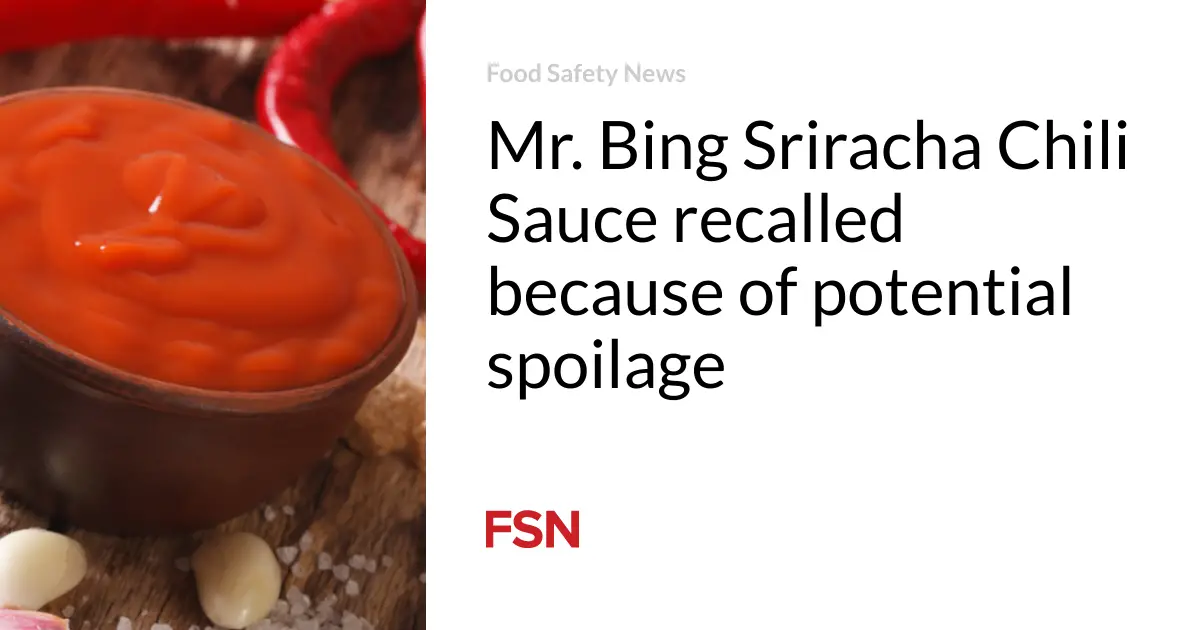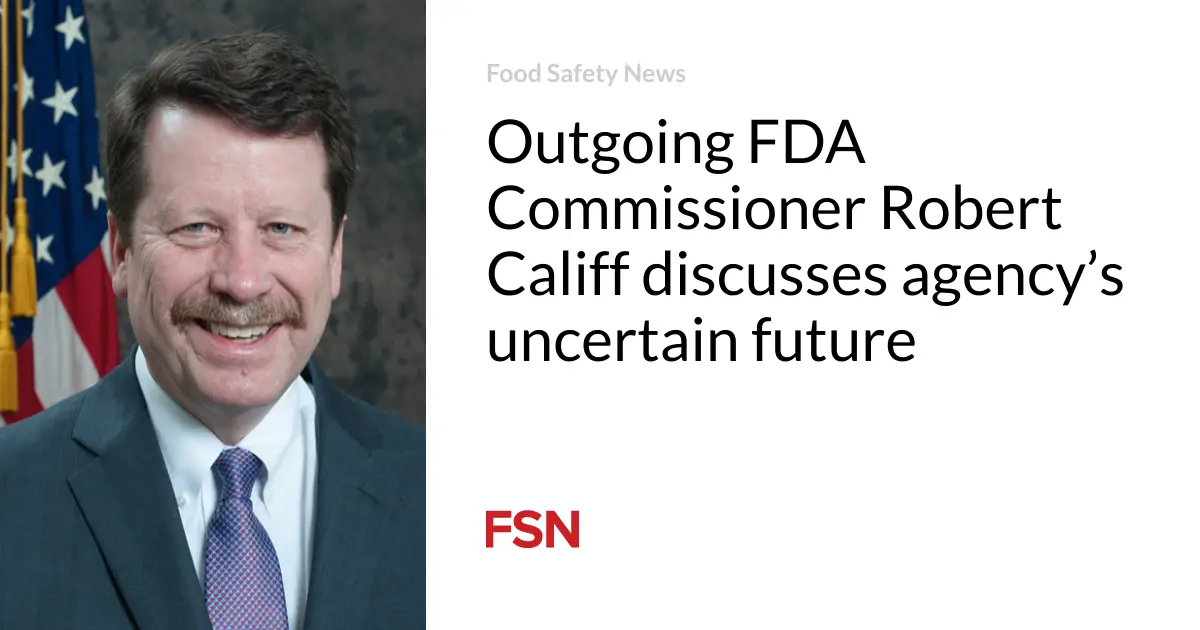
[ad_1]
The USDA has proposed a rule that would stop poultry producers from selling chicken and turkey contaminated with high levels of certain types of Salmonella.
The rule, would make it illegal to sell chicken, chicken parts or ground chicken and turkey if it is found to be contaminated with certain types of Salmonella. It is to be applied by the USDA’s Food Safety and Inspection Service. The proposed rule was more than three years in the making. An enforcement date has not yet been set.
Once the proposed rule is published in the Federal Register the public and entities including industry organizations, individual producers and consumer groups will have 60 days to comment. The comment period could be extended. When the comment period ends the USDA will begin writing the final rule.
The USDA’s Food Safety and Inspection Service estimates the proposed rule would result in benefits to society of $20.5 million per year, ranging from $4.4 million to $39 million. The majority of the benefits would be derived from prevented illnesses of $12.9 million per year, ranging from $0.3 million to $28.7 million. FSIS also estimated avoided costs from a reduction in the risk of outbreak-related recalls for industry. Additional industry actions in response to this proposal may lead to additional benefits, according to the FSIS.
In it’s announcement of the 149-page proposed rule, the USDA boiled the regulation down to simple language:
“The proposal would establish final product standards to prevent raw chicken carcasses, chicken parts, ground chicken, and ground turkey products that contain any type of Salmonella at or above 10 colony forming units (CFU) per gram/ml and any detectable level of at least one of the Salmonella serotypes of public health significance from entering commerce.
“The proposed Salmonella serotypes of public health significance identified for raw chicken carcasses, chicken parts, and comminuted chicken are Enteritidis, Typhimurium, and I,4,[5],12:I:- and for raw comminuted turkey are Hadar, Typhimurium, and Muenchen.”
The USDA says the proposal would require poultry establishments to develop a microbial monitoring program to prevent pathogen contamination throughout the slaughter system.
The proposed rule states that “if test results detect Salmonella at a level of 10 cfu/mL(g) or higher and at least one Salmonella serotype of public health significance, FSIS would consider products represented by the sampled lots to be adulterated and would issue a non-compliance record (NR). Therefore, all products in the lot represented by the sample would be prohibited from entering commerce. If any product from the lot represented by the product samples has entered and remains available in commerce, FSIS would request that the producing establishment recall the implicated products.”
All producers would be required to have written plans on how to handle circumstances when and if violations of the regulation are found.
The proposed rule does not require poultry producers to test live chickens they receive.
“FSIS considered the available scientific research as well as input from the NACMCF and concluded that, at this time, the research does not support the use of a threshold for test results at the receiving step to reduce or eliminate Salmonella from raw poultry products. In addition, FSIS received several comments from small poultry processors and producers and trade associations representing the meat and poultry industries that expressed concerns that the measures under consideration in Component One would impose an overwhelming burden on small producers and processors,” the proposed rule states.
“. . . While FSIS has decided at this time not to establish a regulatory requirement that establishments characterize Salmonella as a hazard reasonably likely to occur at receiving or that incoming flocks be tested for Salmonella before entering an establishment, the Agency is focusing on a non-regulatory approach for reducing the Salmonella load on incoming birds. The Agency intends to provide updated guidance on pre- harvest interventions and practices for preventing or reducing Salmonella colonization of live birds. The Agency also will continue to explore and develop strategies for industry to address Salmonella contamination risk at receiving.”
Scientific evaluation made up the basis for the proposed rule, according to the USDA’s Under Secretary for Food Safety Dr. Emilio Esteban. He said the proposal includes provisions based on feedback from “stakeholder engagement.” He said he wants public, private and consumer groups to provide feedback on the proposed rule.
“We encourage all interested stakeholders to submit comments and relevant data on the proposal as we work to finalize data-driven, science-based regulatory policies to address Salmonella in poultry,” Esteban said.
In addition to proposed rule on Salmonella in chicken and poultry, the USDA is addressing labeling concerns, including false and misleading claims on certain chicken products. Breaded stuffed chicken breasts were already addressed earlier this year with a regulation limiting the amount of Salmonella that they may contain. The USDA contends that depictions of the products on labels were confusing for consumers who thought the products were already cooked.
A separate regulation published earlier this year was drafted to end confusion about the origin of poultry.
“FSIS announced this year a final rule allowing the voluntary ‘Product of USA’ claim to be applied only to those FSIS-regulated products that are derived from animals born, raised, slaughtered and processed in the United States,” according to the USDA.
USDA’s proposed rule explains the rational behind the Salmonella regulation.
“Under this proposal, establishments would be required to incorporate statistical process control (SPC) monitoring principles into their microbial monitoring programs (MMPs). The proposed revisions would require that establishments use only validated and fit for purpose microbial sampling and analysis procedures, generate and record statistically meaningful microbial monitoring data, set benchmarks by which to evaluate microbial monitoring data, and otherwise define the statistical methods the establishment will use to evaluate the recorded data against the predefined limits.
“. . . Salmonella illnesses associated with poultry also represent a considerable economic burden, particularly when accounting for not just the direct medical costs, but also productivity losses, lost life expectancy, chronic illness, and other associated pain and suffering. A recent study estimates that the economic costs of Salmonella illnesses in the United States associated with chicken is $2.8 billion annually,” the proposal states.
The proposed rule also outlines problems with the current regulation in terms of reducing Salmonella infections associated with chicken.
“With respect to Salmonella illnesses associated with chicken and turkey, one study found that the proportion of outbreaks associated with these commodities was essentially unchanged from 1998-2017 and that both the proportion of outbreaks and number of outbreaks associated with chicken remained essentially constant.
“During that period, the per capita annual consumption for pork, beef, and turkey all declined between 9 percent and 22 percent, while annual consumption of chicken increased by 15 percent,” states the proposal.
Costs associated with this proposal are addressed with the statement that “eligible very small (VS) and very low volume (VLV) establishments would have access to laboratory services provided by FSIS at no charge to analyze the establishments’ microbial monitoring samples for them.”
Reactions to the proposed rule
Consumer groups are generally praising the 149-page proposal as being a step forward for public health.
Consumer Reports said the proposed rule is a “momentous and significant step” toward protecting consumers. Brian Ronholm, the director for food policy at Consumer Reports, said too much poultry contaminated with Salmonella ends up on the market and sickens hundreds of thousands of people every year.
“By establishing final product standards that strictly limit Salmonella levels allowed in poultry, the USDA’s proposed rule will encourage processors to step up contamination prevention efforts and lower the risk that the chicken and turkey you bring home from the grocery store will make you sick,” Ronholm said.
Research has found that Salmonella on poultry is responsible for 29 percent of Salmonella illnesses in the United States. Salmonella contamination is widespread in chickens in part because of the often crowded and filthy conditions in which they are raised, according to Consumer Reports. Salmonella from live birds contaminates chicken and chicken parts while carcasses are being prepared for sale to consumers.
“A 2022 CR investigation, for example, found almost one-third of ground chicken samples tested contained salmonella. Of those, 91 percent were contaminated with one of the three strains that pose the biggest threat to human health: Infantis, Typhimurium, and Enteritidis,” according to Consumer Reports.
Although the USDA’s proposed rule is being embraced by consumer protection groups, the failure to include the Salmonella serotype Infantis is drawing fire. The rule would cover only Enteritidis, Typhimurium, and I,4,[5],12:I:- types of Salmonella in chicken.
A petition filed by a number of groups and individuals in January of 2020 identified 31 types of Salmonella that cause human illness and can be found in poultry. The petition asked the USDA to declare the serotypes as adulterants, thus making it illegal to sell poultry contaminated with them.
In May 2022, FSIS denied the petition without prejudice, citing a lack of sufficient data available to support the sweeping actions requested in the petition. In the response, FSIS agreed that an updated Salmonella strategy is necessary to reduce Salmonella illnesses associated with poultry and described how FSIS was working toward gathering data and information necessary to support a revised strategy
The agency’s failure to include only three of those serotypes for chicken is seen as being deficient by some, including the Center for Science in the Public Interest.
The proposal does not cover Salmonella Infantis, which emerged as a leading human health threat in 2018, causing a large multistate outbreak. Adding this strain would ensure the rule covers 79 percent of outbreak-associated illnesses, according to USDA’s estimates.
“Salmonella Infantis is an important emerging threat to human health, and excluding this strain risks having a new standard that is outdated before the ink is even dry,” said the centers’s Director of Regulatory Affairs Sarah Sorscher. “In addition to including Infantis in its final proposal, USDA should also be sure to fulfill its commitment to revisit the standards regularly, swiftly incorporating new emerging threats in the future.”
However, overall the proposed rule is being lauded by all corners of consumer protection groups. Bill Marler, the Seattle food safety attorney who filed the petition on behalf of consumer groups and individual consumers, said the proposed rule is a major step by the USDA.
“Sure, I would like to ban all Salmonella from chicken, but I learned long ago that you never make progress by making ‘perfect the enemy of the good,’ ” said Marler. “Making the three Salmonellas that are know to cause human illnesses adulterants and limiting them in poultry is a good step for public health and in the long run a good step for the poultry industry.
“Kudos to Tom Vilsack, Jose Emilio Estaban, Sandra Eskin and all the great scientists and others at USDA/FSIS that worked on this. Not perfect in my mind, but awfully damn good.”
One consumer group, the Consumer Federation of America has a decidedly split opinion of the proposed rule. The federation contends that the proposed rule will move the needle forward on the protection of consumers from Salmonella on chicken and turkey sold at grocery stores across the nation.
“Today’s proposed rule marks an important step forward for public health,” said Thomas Gremillion, the federation’s director of food policy. “For decades, consumers have had to pay the price for an ineffective and inefficient poultry inspection system that fails to hold companies accountable for shipping unsafe food to store shelves. Today’s rule sets safety standards where they matter to consumers: on poultry products themselves, rather than on the establishments that process the birds.”
The federation says the proposed rule will begin to put the responsibility of safe poultry on the shoulders of industry rather than on consumers. The proposed rule puts to rest the “antiquated notion” that Salmonella, no matter how virulent, can never be considered an adulterant because, in the words of the U.S. Court of Appeals for the D.C. Circuit’s 1974 decision in American Public Health Association v. Butz: “American housewives and cooks normally are not ignorant or stupid and their methods of preparing and cooking of food do not ordinarily result in salmonellosis.”
“Even back in 1974, the Butzcourt’s misogynist rhetoric did not square with the epidemiological and microbiological data,” the federation’s announcement said.
The poultry industry is being cautious with its reaction to the proposed rule.
“Regarding the Salmonella Framework, while NTF (National Turkey Federation) believes that FSIS already possesses the authority and regulatory tools necessary to drive improvements in food safety without implementing a final product standard for Salmonella in turkey products, we will diligently review and provide meaningful comment on the proposal. NTF believes any standard should be science-based and should not impose unnecessary costs and product destruction for members of the U.S. turkey industry,” according to a statement from the industry group.
Comments on the proposed rule about Salmonella on chicken may be submitted online via the federal eRulemaking portal, available at www.regulations.gov; by mail sent to Docket Clerk, U.S. Department of Agriculture, Food Safety and Inspection Service, 1400 Independence Avenue SW, Mailstop 3758, Washington, D.C. 20250-3700, or by hand or courier delivery to 1400 Independence Avenue SW, Jamie L. Whitten Building, Room 350-E, Washington, D.C. 20250-3700. All items submitted by mail or electronic mail must include the agency name and docket number FSIS-2023-0028.
(To sign up for a free subscription to Food Safety News,click here)
[ad_2]
Source link





